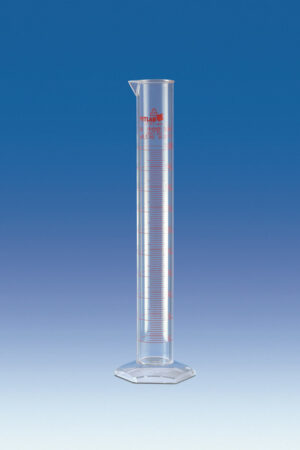2
Showing 901–950 of 1694 results
-

Graduated Cylinder, PMP (TPX), Molded Graduations, 2000 mL, PK/2
$185.30 Add to cart View Product DetailsGraduated Cylinder, PMP (TPX), Molded Graduations, 2000 mL, PK/2
-

Graduated Cylinder, PMP (TPX), Printed Graduations, 2000 mL, CS/2
$209.53 Add to cart View Product DetailsGraduated Cylinder, PMP (TPX), Printed Graduations, 2000 mL, CS/2
-

Graduated Cylinder, PP, Printed Graduations, 2000 mL, CS/2
$106.00 Add to cart View Product DetailsGraduated Cylinder, PP, Printed Graduations, 2000 mL, CS/2
-

Graduated cylinder, USP BBR tall, A, 10:0.2mL, pk of 2
$40.09 Add to cart View Product DetailsGraduated cylinder, USP BBR tall, A, 10:0.2mL, pk of 2
-

Graduated cylinder, USP BBR tall, A, 100:1mL, pk of 2
$49.27 Add to cart View Product DetailsGraduated cylinder, USP BBR tall, A, 100:1mL, pk of 2
-

Graduated cylinder, USP BBR tall, A, 25:0.5mL, pk of 2
$41.22 Add to cart View Product DetailsGraduated cylinder, USP BBR tall, A, 25:0.5mL, pk of 2
-

Graduated cylinder, USP BBR tall, A, 250:2mL, pk of 2
$94.83 Add to cart View Product DetailsGraduated cylinder, USP BBR tall, A, 250:2mL, pk of 2
-

Graduated cylinder, USP BBR tall, A, 5:0.1mL, pk of 2
$40.09 Add to cart View Product DetailsGraduated cylinder, USP BBR tall, A, 5:0.1mL, pk of 2
-

Graduated cylinder, USP BBR tall, A, 50:1mL, pk of 2
$47.01 Add to cart View Product DetailsGraduated cylinder, USP BBR tall, A, 50:1mL, pk of 2
-

Graduated cylinder, USP BBR tall, A, 500:5mL, pk of 2
$162.13 Add to cart View Product DetailsGraduated cylinder, USP BBR tall, A, 500:5mL, pk of 2
-

Graduated Cylinder,PMP,molded grads,Class A cert, 50mL, pk 2
$20.63 Add to cart View Product DetailsGraduated Cylinder,PMP,molded grads,Class A cert, 50mL, pk 2
-

Graduated Cylinder,PMP,molded grads,Class A cert,100mL, pk 2
$27.96 Add to cart View Product DetailsGraduated Cylinder,PMP,molded grads,Class A cert,100mL, pk 2
-

Graduated Cylinder,PMP,molded grads,Class A cert,10mL, pk 2
$19.29 Add to cart View Product DetailsGraduated Cylinder,PMP,molded grads,Class A cert,10mL, pk 2
-

Graduated Cylinder,PMP,molded grads,Class A cert,250mL, pk 2
$42.91 Add to cart View Product DetailsGraduated Cylinder,PMP,molded grads,Class A cert,250mL, pk 2
-

Graduated Cylinder,PMP,molded grads,Class A cert,25mL, pk 2
$19.29 Add to cart View Product DetailsGraduated Cylinder,PMP,molded grads,Class A cert,25mL, pk 2
-

Graduated Cylinder,PMP,molded grads,Class A cert,500mL, pk 2
$89.70 Add to cart View Product DetailsGraduated Cylinder,PMP,molded grads,Class A cert,500mL, pk 2
-

Graduated Cylinder,PMP,molded/screened,Class A cert,10mL,pk2
$24.67 Add to cart View Product DetailsGraduated Cylinder,PMP,molded/screened,Class A cert,10mL,pk2
-

Graduated Cylinder,PMP,molded/screened,Class A cert,25mL,pk2
$25.86 Add to cart View Product DetailsGraduated Cylinder,PMP,molded/screened,Class A cert,25mL,pk2
-

Graduated Cylinder,PMP,molded/screened,Class A cert,50mL,pk2
$26.91 Add to cart View Product DetailsGraduated Cylinder,PMP,molded/screened,Class A cert,50mL,pk2
-

GraduatedCylinder,PMP,molded/screened,Class A cert,100mL,pk2
$36.48 Add to cart View Product DetailsGraduatedCylinder,PMP,molded/screened,Class A cert,100mL,pk2
-

GraduatedCylinder,PMP,molded/screened,Class A cert,250mL,pk2
$57.41 Add to cart View Product DetailsGraduatedCylinder,PMP,molded/screened,Class A cert,250mL,pk2
-

GraduatedCylinder,PMP,molded/screened,Class A cert,500mL,2pk
$92.99 Add to cart View Product DetailsGraduatedCylinder,PMP,molded/screened,Class A cert,500mL,2pk
-

Griffin Style PMP (TPX) Beakers with Molded Graduations, 3000 mL, Case
$114.44 Add to cart View Product DetailsGriffin Style PMP (TPX) Beakers with Molded Graduations, 3000 mL, Case
-

Griffin Style PMP (TPX) Beakers with Molded Graduations, 5000 mL, Case
$190.96 Add to cart View Product DetailsGriffin Style PMP (TPX) Beakers with Molded Graduations, 5000 mL, Case
-

Griffin Style PMP (TPX) Beakers with Printed Graduations, 3000 mL, Case
$115.33 Add to cart View Product DetailsGriffin Style PMP (TPX) Beakers with Printed Graduations, 3000 mL, Case
-

Griffin Style PMP (TPX) Beakers with Printed Graduations, 5000 mL, Case
$175.35 Add to cart View Product DetailsGriffin Style PMP (TPX) Beakers with Printed Graduations, 5000 mL, Case
-

Guinea pig mineral mix
$82.75 Add to cart View Product DetailsGuinea Pig Mineral Mix
-

Ham’s F12,2 X 5 L
$38.03 Add to cart View Product DetailsHam’s F12,2 X 5 L
-

HAWK OSER SALT MIXTURE No.3
$134.33 Add to cart View Product DetailsHAWK OSER SALT MIXTURE No.3
-

HBSS,2 X 5 L
$21.76 Add to cart View Product DetailsHBSS,2 X 5 L
-

HBSS,2 X 5 L
$14.56 Add to cart View Product DetailsHBSS,2 X 5 L
-

Heathrow Scientific PCR Cooler, 96 Well, Assorted (1 x Pink, 1 x Blue)
$100.45 Add to cart View Product DetailsHeathrow Scientific PCR Cooler, 96 Well, Assorted (1 x Pink, 1 x Blue)
-

Heathrow Scientific PCR Cooler, 96 Well, Light Blue
$100.45 Add to cart View Product DetailsHeathrow Scientific PCR Cooler, 96 Well, Light Blue
-

Heathrow Scientific PCR Cooler, 96 Well, Pink
$100.45 Add to cart View Product DetailsHeathrow Scientific PCR Cooler, 96 Well, Pink
-

Heathrow Scientific Universal Pipette Wall Mount
$39.45 Add to cart View Product DetailsHeathrow Scientific Universal Pipette Wall Mount
-

Heavy Duty Autoclavable Polypropylene (PP) Vacuum Bottle, 2 L, with 53 mm (53B) Tangle Free VersaCap, Two 1/4 Inch Hose Barbs and Sealable Vent Port, 1/EA
$50.73 Add to cart View Product DetailsHeavy Duty Autoclavable Polypropylene (PP) Vacuum Bottle, 2 L, with 53 mm (53B) Tangle Free VersaCap, Two 1/4 Inch Hose Barbs and Sealable Vent Port, 1/EA
-

Heavy Duty HDPE Vacuum Bottle, 2 L, with 53 mm (53B) Tangle Free VersaCap, Two 1/4 Inch Hose Barbs and Sealable Vent Port, Bleach Compatible, 1/EA
$50.28 Add to cart View Product DetailsHeavy Duty HDPE Vacuum Bottle, 2 L, with 53 mm (53B) Tangle Free VersaCap, Two 1/4 Inch Hose Barbs and Sealable Vent Port, Bleach Compatible, 1/EA
-

Hectorite
$590.21 Add to cart View Product DetailsHectorite
-

HEGSTED SALT MIXTURE
$117.58 Add to cart View Product DetailsHEGSTED SALT MIXTURE
-

HEK293/5-HT2C Stable Cell Line
$7,331.25 Add to cart View Product Details5-Hydroxytryptamine (5-HT, also commonly known as serotonin) is synthesized in enterochromaffin cells in the intestine and in serotonergic nerve terminals. In the periphery, 5-HT mediates gastrointestinal motility, platelet aggregation, and contraction of blood vessels. Many functions of the central nervous system are influenced by 5-HT, including sleep, motor activity, sensory perception, arousal, and appetite. A family of 12 GPCRs and one ion channel mediate the biological effects of 5-HT (Hoyer et al., 1994). 5HT2C is expressed in the brain and spinal cord, especially the choroid plexus. 5HT2C receptor agonists may have important clinical value in the treatment of mental and eating disorders, such as depression, panic anxiety, OCD, bulimia, and obesity. GenScript’s cloned human 5-HT2C expressing cell line is generated in the CHO-K1 host.
-

HEK293/ACE2 Stable Cell Line
$6,468.75 Add to cart View Product DetailsRecombinant HEK293 cells stably express Angiotensin-converting enzyme 2 (ACE2) on the cell surface. The surface expression of ACE2 is validated by FACS analysis. This stable cell line product is designed for cell-based binding assays that measure the binding affinity and stability of antibody based biologics binding with ACE2, and can be utilized for SARS-Cov-2 pseudovirus neutralization assay for screening neutralizing antibodies.
-

HEK293/AT1 Stable Cell Line
$7,331.25 Add to cart View Product DetailsAngiotensin receptor 1 (AT1 receptor) is a member of angiotensin receptors which are responsible for the signal transduction of the main effecter hormone. Effects mediated by the AT1 receptor include vasoconstriction, aldosterone synthesis and secretion, increased vasopressin secretion, cardiac hypertrophy, augmentation of peripheral noradrenergic activity, vascular smooth muscle cells proliferation, decreased renal blood flow, renal renin inhibition, renal tubular sodium reuptake, modulation of central sympathetic nervous system activity, cardiac contractility, central osmocontrol and extracellular matrix formation.
-

HEK293/CLDN18.2 Stable Cell Line
$7,331.25 Add to cart View Product DetailsClaudins are a family of proteins, which play a role in maintaining tight cell junctions. Differentclaudin subtypes are expressed on different tissues.Claudin18 isoform 2 (CLDN18.2) expressionin normal tissues is restricted to cells of the gastric mucosa and is absent from other healthytissues However, CLDN 18.2 is expressed in 70% of primary gastric adenocarcinomas and itsmetastases (101). It has also beenshown to be expressed in a number of other cancers,including pancreatic (50%), esophagus (30%) and NSCLC (25%)The restricted expressionmakes it a potential drug target for the treatment of gastric and pancreatic adenocarcinoma, asevidenced by effortsto target CLDN18.2 via naked antibody and CAR-T modalities.
* The mycoplasma test was
performed with MycoAlert™ PLUS Mycoplasma Detection Kit of Lonza. -

HEK293/EP1 Stable Cell Line
$7,331.25 Add to cart View Product DetailsProstaglandins are known to affect the nervous system and can modulate synaptic transmission and neurotransmitter release, the sleep/wake cycle, fever, pain, and the immune system. Prostaglandin E2 receptor, EP1 subtype (EP1/PTGER1) is a receptor for prostaglandin E2 (PGE2). The members of the EP receptor family, EP1, EP2, EP3, and EP4, elicit their actions by altering cyclic adenosine monophosphate (cAMP) or intracellular calcium concentrations. EP1 activates phospholipase C and phosphatidylinositol turnover and stimulates the release of intracellular calcium via a Gi/Gq-coupled mechanism. EP2 and EP4 both signal through a Gs-coupled mechanism that stimulates adenylyl cyclase and increases intracellular levels of cAMP. EP1 appears to mediate the effects of PGE2 in promoting the formation of precancerous lesions in animal models of colon cancer. In addition, EP1 has an inhibitory effect on stress-induced aggressive and risk-taking behaviors in mice.
-

HEK293/FP/Gα15 Stable Cell Line
$7,331.25 Add to cart View Product DetailsProstaglandin F (2-alpha) is known as a potent luteolytic agent. It is involved in modulating intraocular pressure and smooth muscle contraction in uterus. Its effects on cells are mediated through specific interaction with the Prostanoid receptor FP, which is a 359-amino acid protein. Having 7 putative transmembrane domains, FP resembles the characteristic of G protein coupled receptors. Knockout studies in mice suggest that the interaction of PGF2-alpha with this receptor may initiate parturition in ovarian luteal cells and thereupon induce luteolysis.
-

HEK293/GCGR/Gα15 Stable Cell Line
$7,331.25 Add to cart View Product DetailsGlucagon regulates blood glucose via control of hepatic glycogenolysis and gluconeogenesis and via regulation of insulin release from the β cell. Pharmacological administration of glucagon increases blood glucose in normal and diabetic subjects, and produces positive inotropic and chronotropic cardiovascular effects, relaxation of smooth muscle in the gastrointestinal tract and stimulation of growth hormone secretion. The actions of glucagon are mediated via a single adenylate cyclase-coupled glucagon receptor that also couples to the phospholipase C-inositol phosphate (PLC-IP) pathway leading to Ca2+ release from intracellular stores.
-

HEK293/Gα15 Stable Cell Line
$7,331.25 Add to cart View Product DetailsHEK293/Gα15 is a HEK293 cell line stably expressing the Gα15 alpha subunit protein which a Gq protein. It is used as a host cell for transfection expression of Gs and Gi/o -coupled receptors, the constitutively expressed Gα15 protein in the cells allows many transfected receptors which normally stimulate/inhibit the cAMP pathway, to couple to Gq signal transduction and mobilize intracellular calcium. The cell line carries the puromycin resistance gene and is resistant to puromycin
-

HEK293/H1 Stable Cell Line
$7,331.25 Add to cart View Product DetailsThe H1 histamine receptor is expressed primarily in the lungs, vasculature, and brain. The H1 mediates the contraction of smooth muscles, neurotransmission in the central nervous system, the release of catecholamine from adrenal medulla, and increases in capillary permeability due to contraction of terminal venules. H1’s role in inflammatory responses makes its antagonist suitable for treating allergies.
-

HEK293/PD-L1 Stable Cell Line
$7,331.25 Add to cart View Product DetailsProgrammed death-ligand 1 (PD-L1) also known as cluster of differentiation 274 (CD274) or B7 homolog 1 (B7-H1) is a protein that in humans is encoded by the CD274 gene. The formation of the PD-1 receptor / PD-L1 or B7.1 receptor /PD-L1 ligand complex transmits an inhibitory signal which reduces the proliferation of these CD8+ T cells at the lymph nodes. PD-1 is also able to control the accumulation of foreign antigen specific T cells in the lymph nodes through apoptosis, which is further mediated by a lower regulation of the gene Bcl-2.
-

HEK293/TP Stable Cell Line
$7,331.25 Add to cart View Product DetailsThe thromboxane A2 (TxA2) receptor (TP) is a member of the G protein-coupled receptor (GPCR) superfamily which mediates TxA2-induced platelet aggregation and vasoconstriction. Dysregulation of TxA2 synthesis and function has been implicated in the pathogenesis of a number of disease states including myocardial ischemia, asthma, pregnancy-induced hypertension, and a variety of kidney diseases. TP receptors (Thromboxane A2 receptors) are widely distributed among different organ systems and localized on both cell membranes and in intracellular structures. Two isoforms of human TPs have been cloned from placenta (TPα) and endothelium (TPβ) that differ in their mechanisms and kinetics of desensitization and internalization. The TPs are linked via the Gq/G11 class of G proteins to phospholipase C (PLC), which hydrolyzes phosphoinositides to two potent second messengers: inositol 1,4,5-trisphosphate, which leads to an increase in cytoplasmic free calcium, and diacylglycerol (DAG), which activates protein kinase C (PKC).






